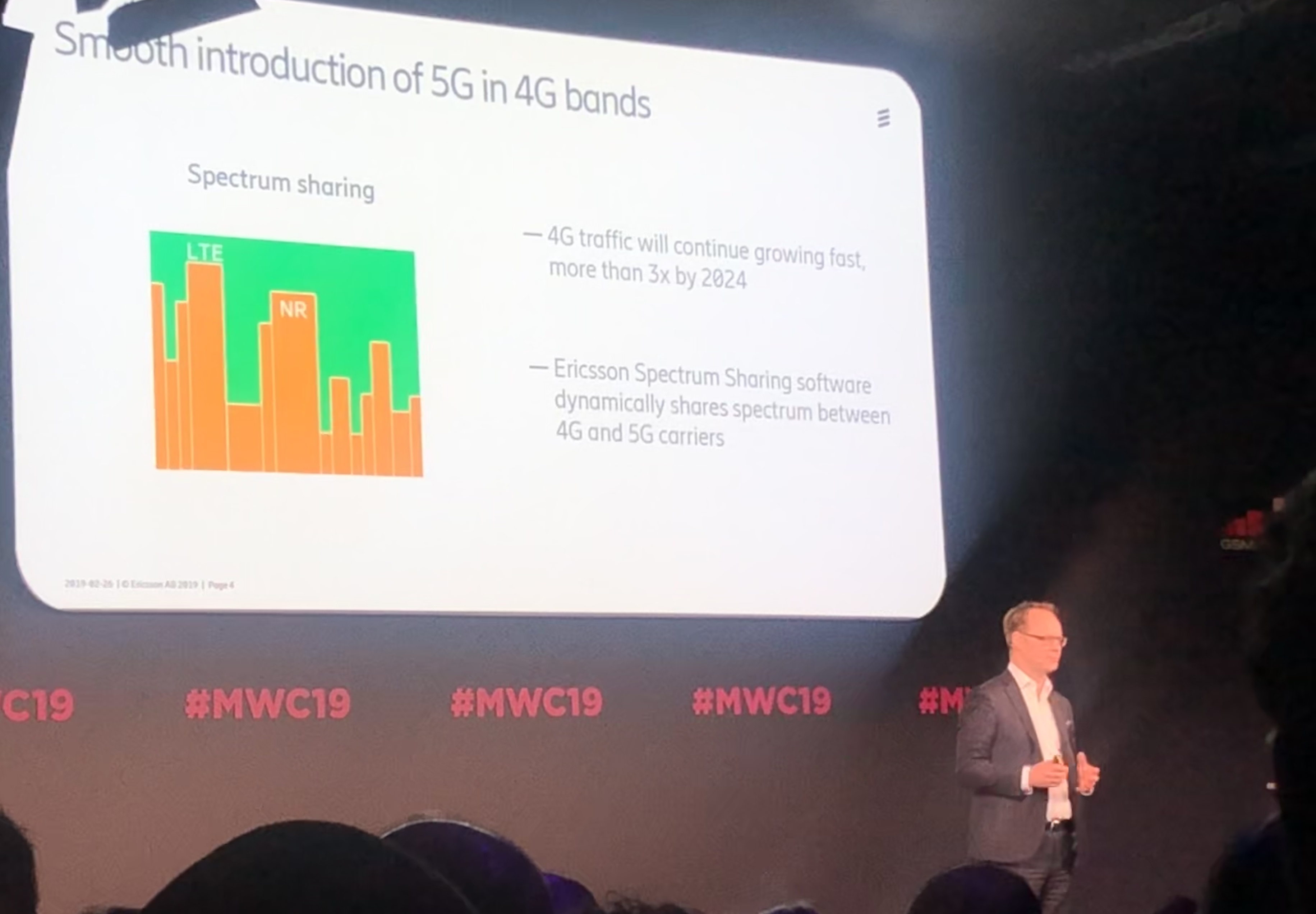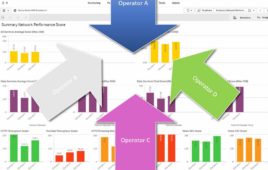
Thomas Noren, head of 5G commercialization at Ericsson, speaking during a session at MWC 2019 in Barcelona.
A session at MWC 2019 in Barcelona titled ‘Debate: 5G Deployments in High-Frequency Bands Are Uneconomical’ turned out to be not much of a debate, with all of the speakers agreeing rollouts in millimeter wave bands can and are being done.
Thomas Noren, head of 5G commercialization at Ericsson, told the audience that the market has already proven millimeter wave is very attractive. He noted U.S. operators have already invested in and built out networks supporting mmWave, with commercial services (from AT&T and Verizon) currently available.
“The more interesting question then, is how is it done?” Noren said.
Noren noted that low frequency bands are great because they provide greater coverage and penetration, but high bands are very wide, delivering high speeds and great performance. However, both coverage and capacity is needed for 5G.
“One of the key things we need to do in 5G is we need to leverage the already huge investments that have been made in infrastructure and in spectrum,” Noren said.
A smart way to economically deploy 5G in mmWave bands is to combine them with low bands, he said. To do this, operators can lean on the technique of carrier aggregation that’s been used in 4G, where more uplink traffic can run on the lower band and extend the coverage of the high band by up to as much as 60%, according to Noren.
He noted that dual-connectivity, while good for the introduction of 5G in non-standalone mode (NSA) in mobility, does not solve the coverage problem or provide the benefit of carrier aggregation.
Still, the issue remains that low bands are already typically used for 4G.
“The solution for that is called spectrum sharing,” Noren said. “In previous generation shifts you have always been forced to allocate part of a spectrum dedicated to a new technology. We have overcome this problem now by being able to schedule per millisecond, 4G and 5G simultaneously.”
With Ericsson’s Spectrum Sharing software operators can allocate to 4G or 5G users based on what the specific demand is every millisecond in the cell. The first 5G capable handsets were introduced this week at MWC and will soon be in consumers’ hands. With the spectrum sharing solution, some resource load will be allocated to 5G, but initially most spectrum will be used for 4G before 5G device adoption becomes widespread. Then, the spectrum will dynamically migrate to 5G usage over time as more users adopt 5G-capable phones, Noren explained.
“This is huge because we can effectively migrate spectrum in a very very smooth way depending on device penetration and usage also on the low existing band,” he said.
Noren cited fixed wireless access, and industrial applications, like automation in factories or other confined environments, as two use cases of where mmWave bands are particularly useful.




